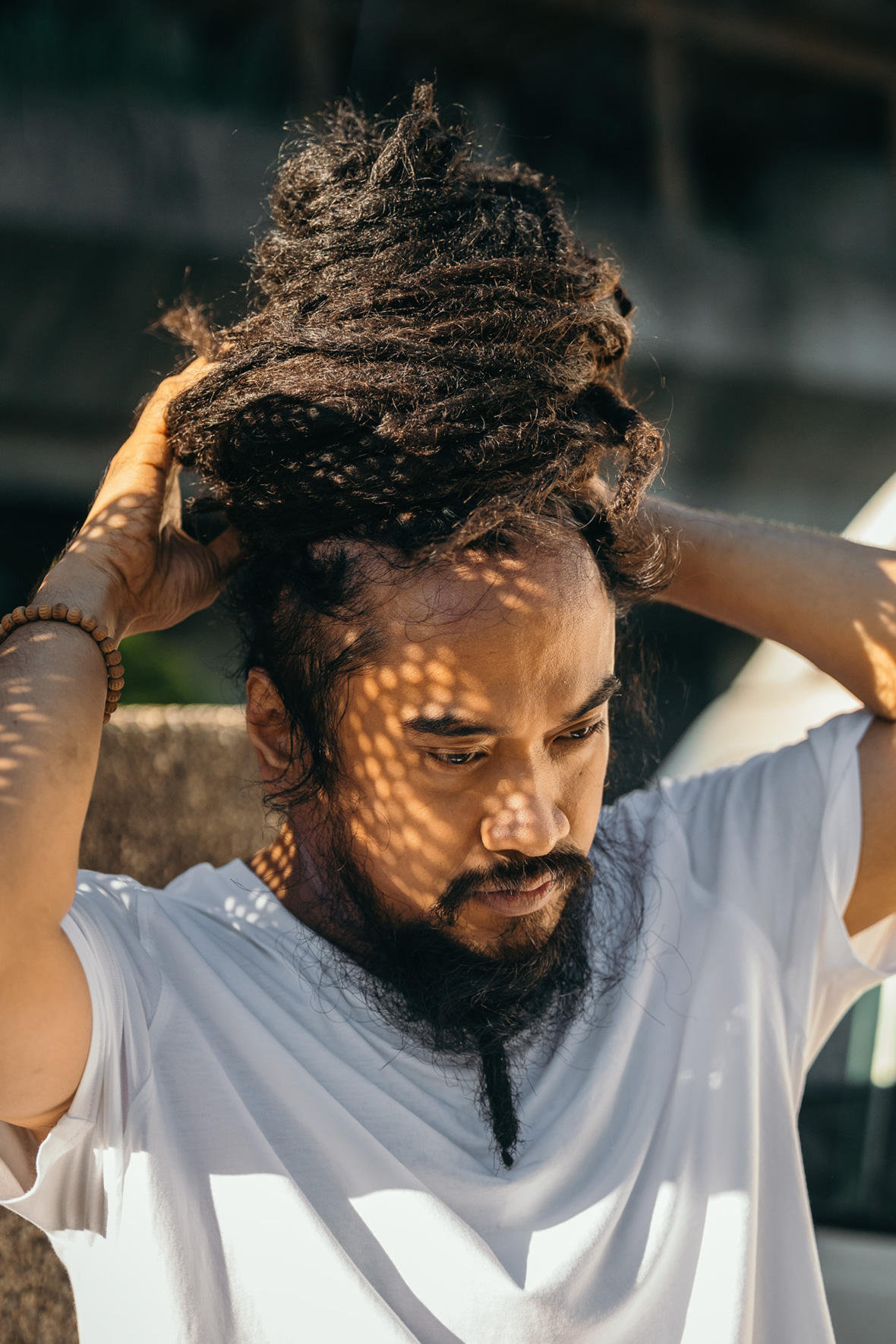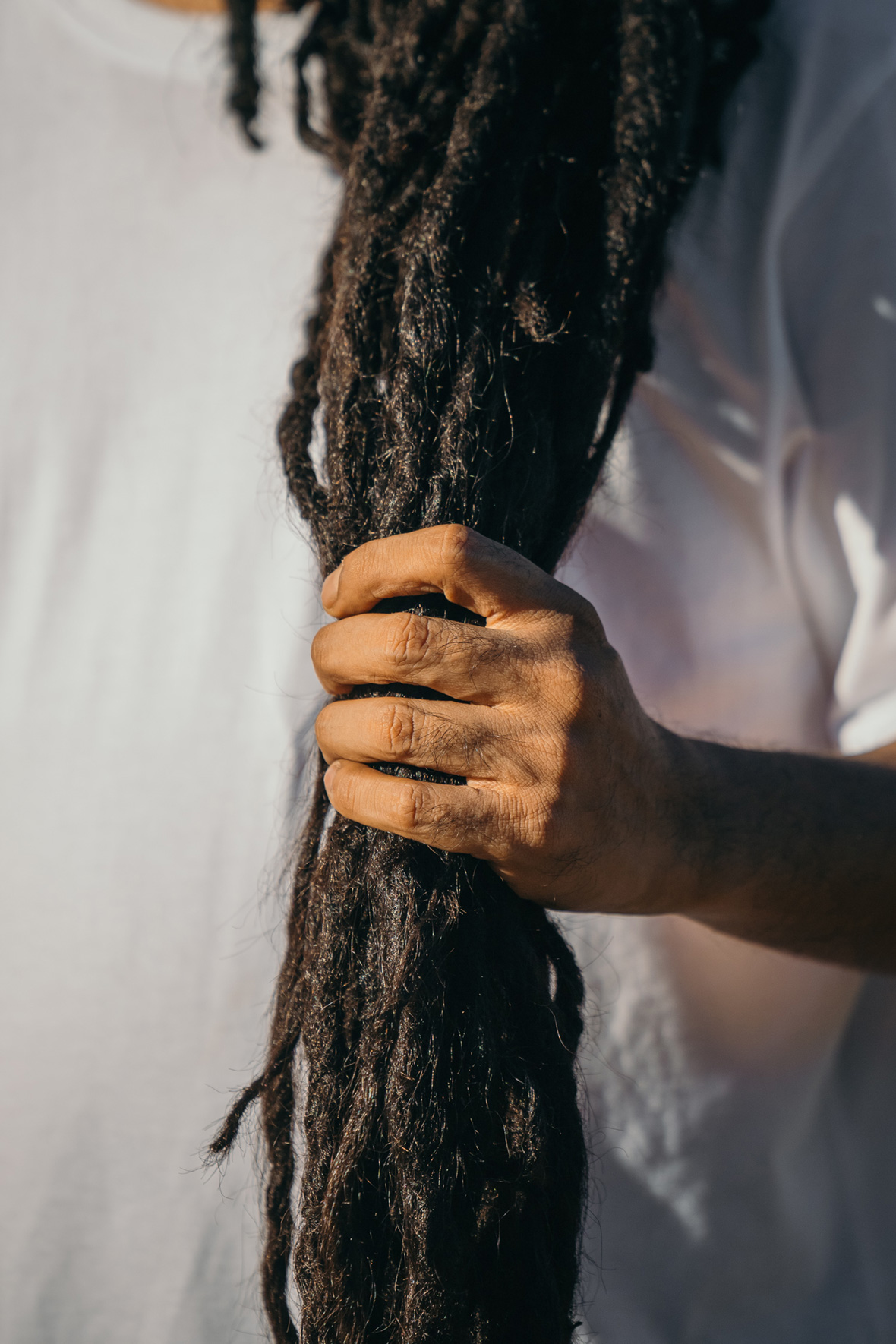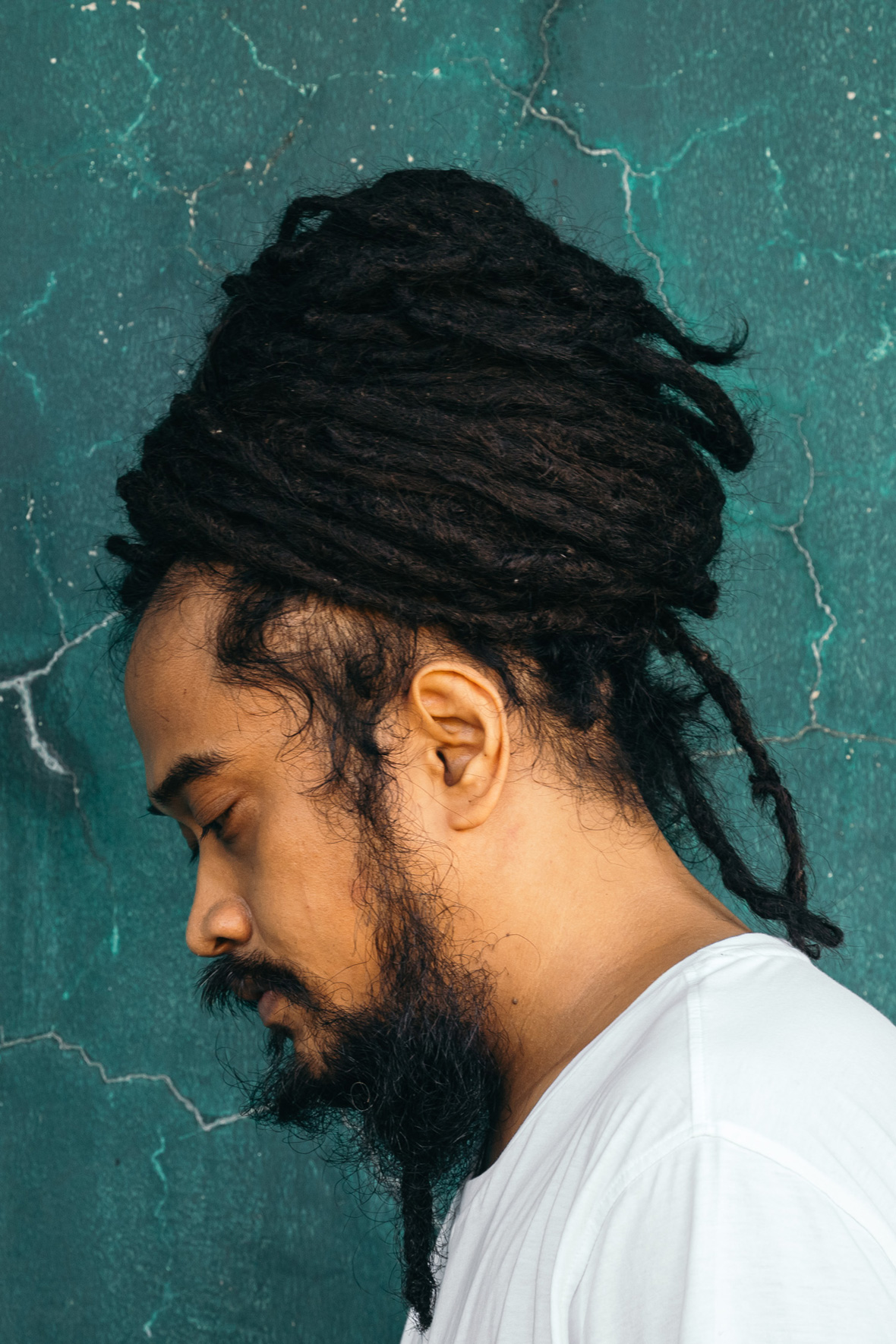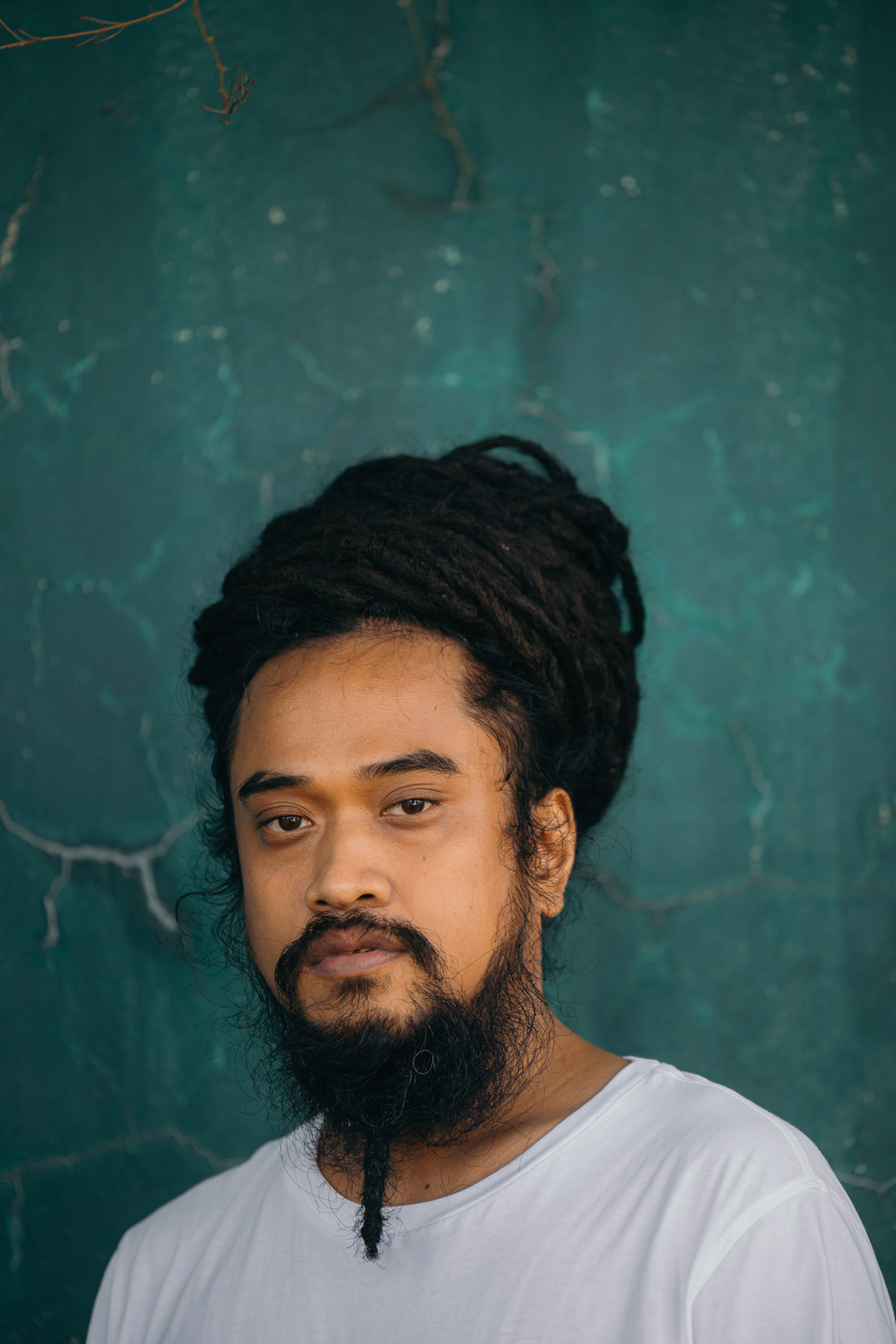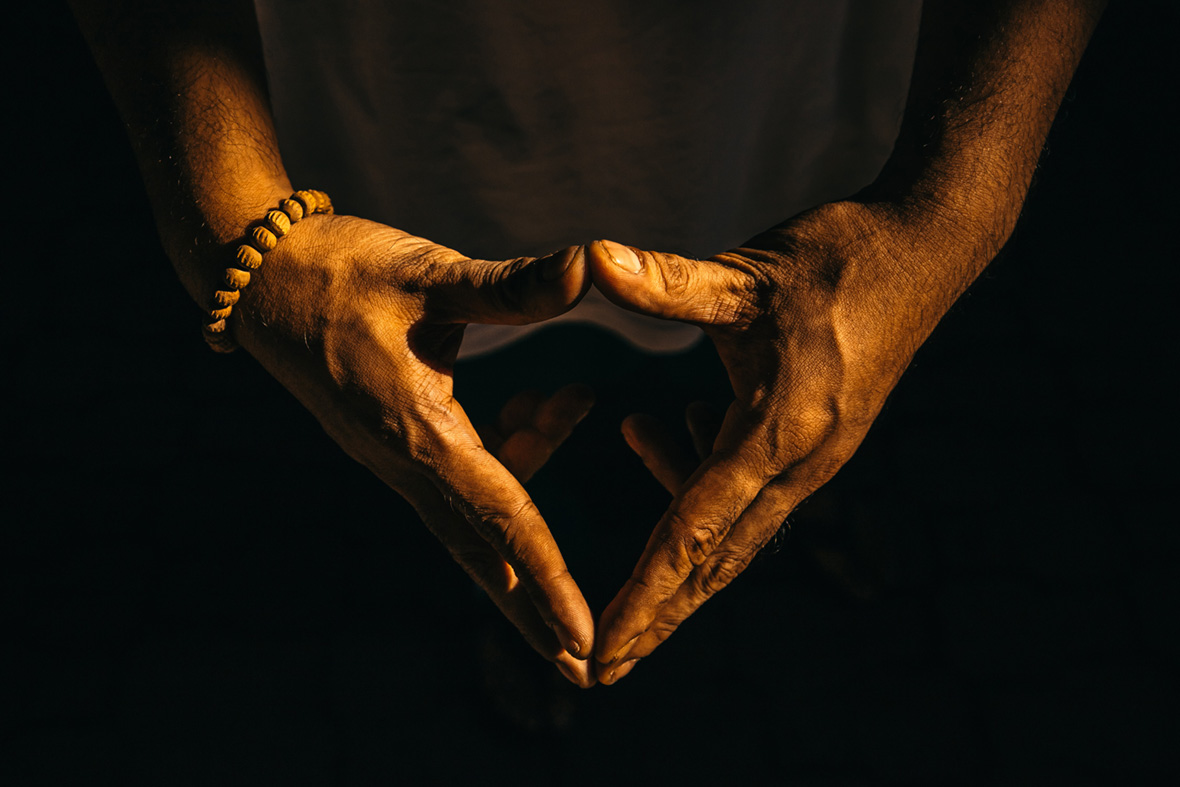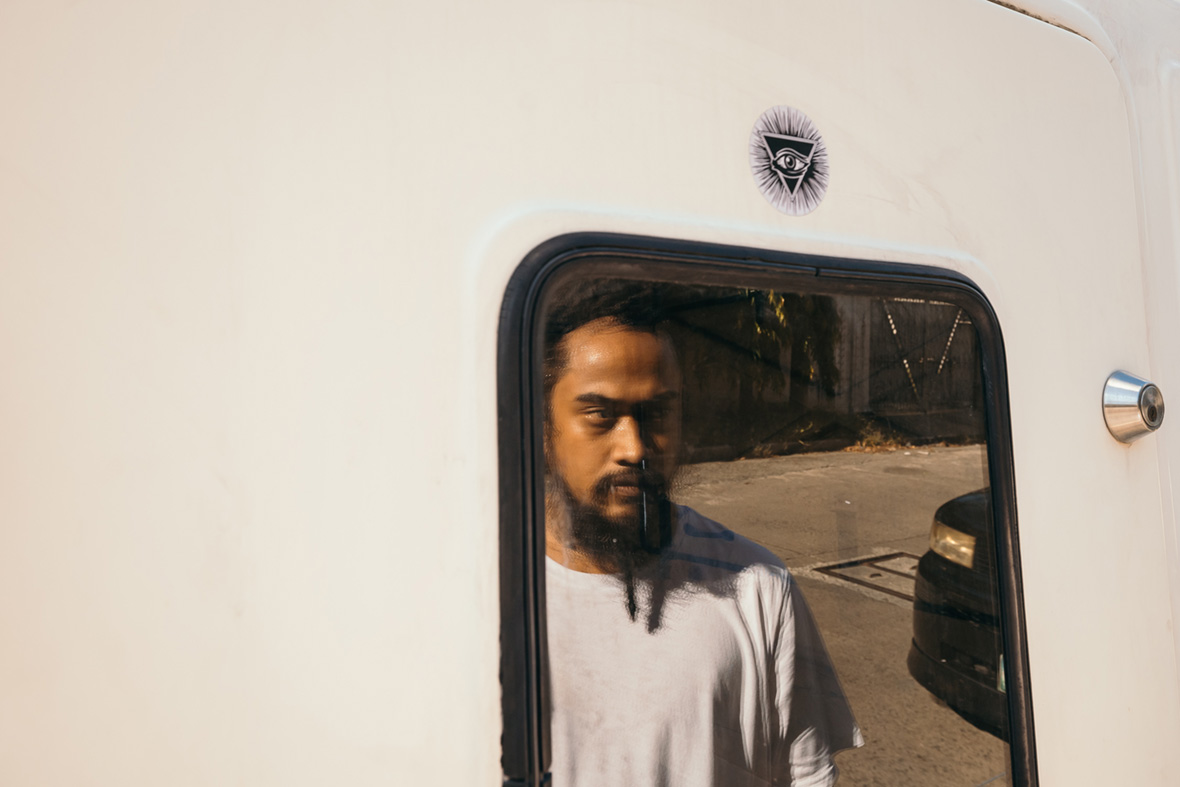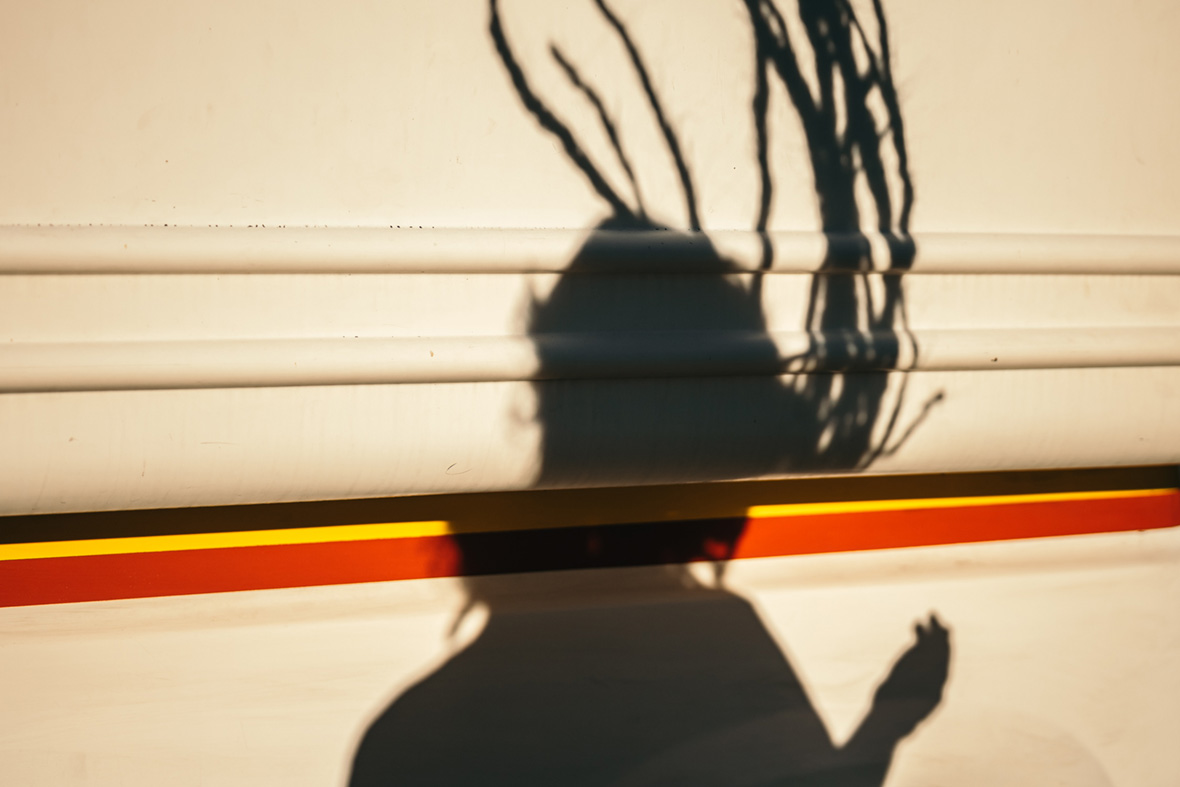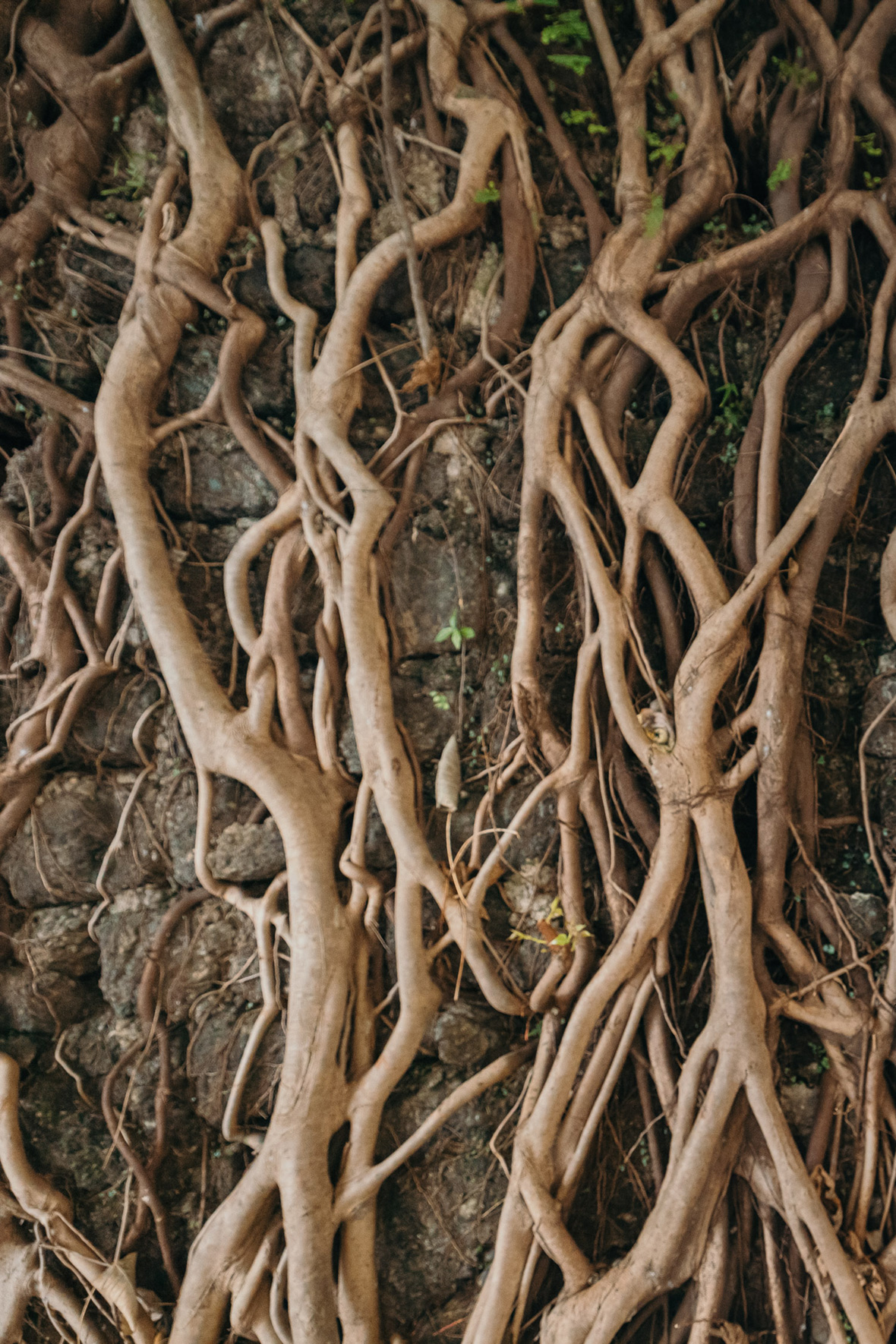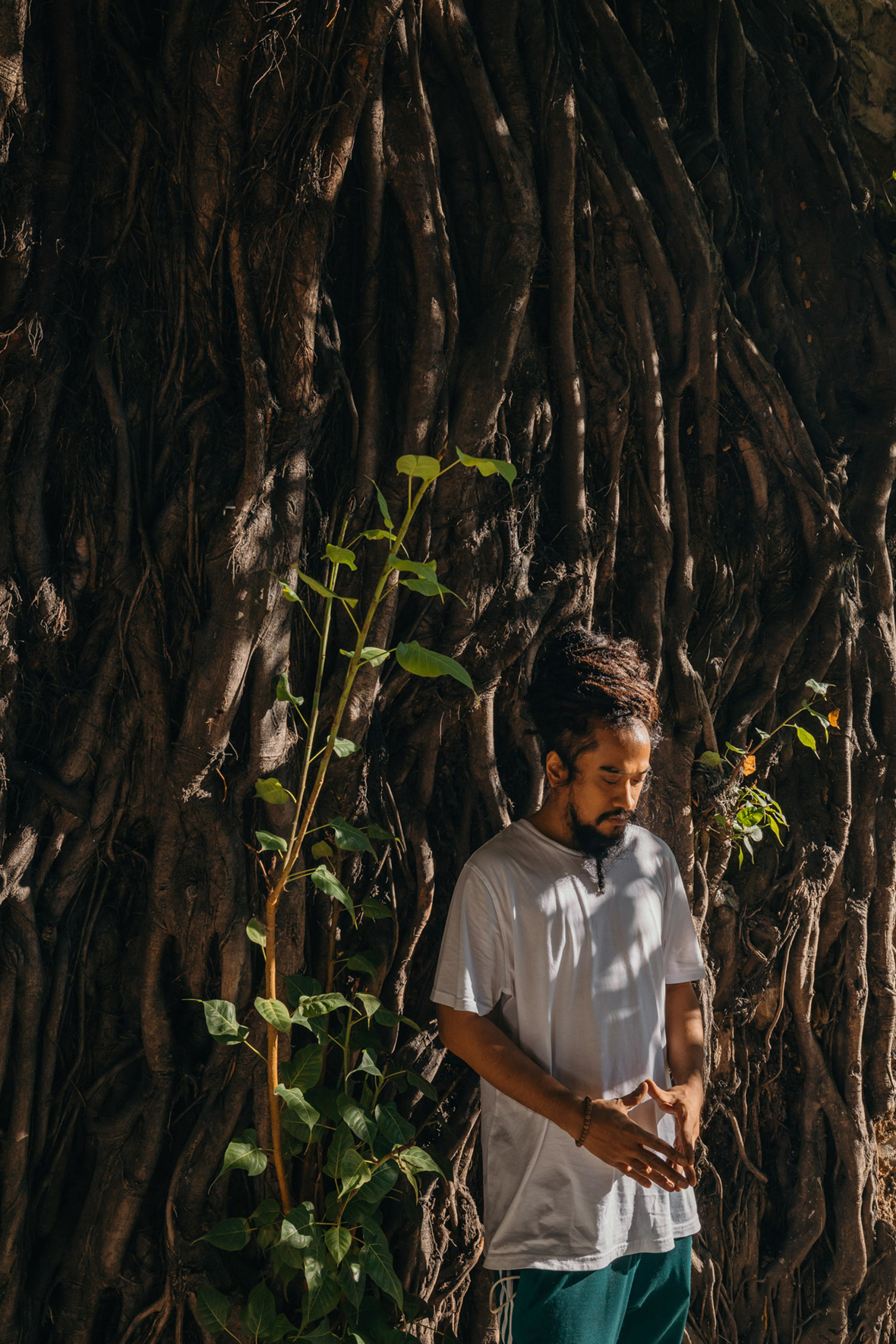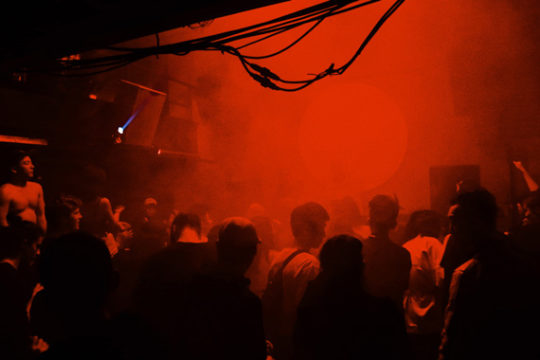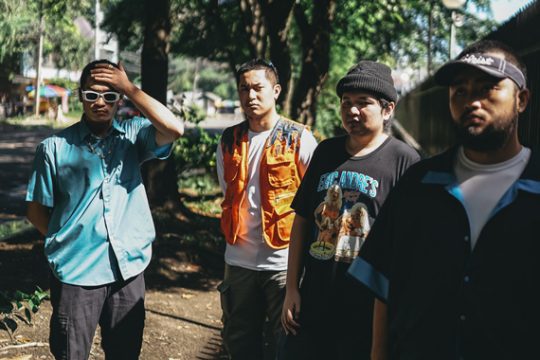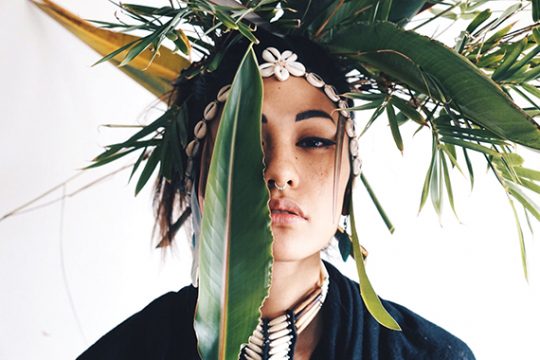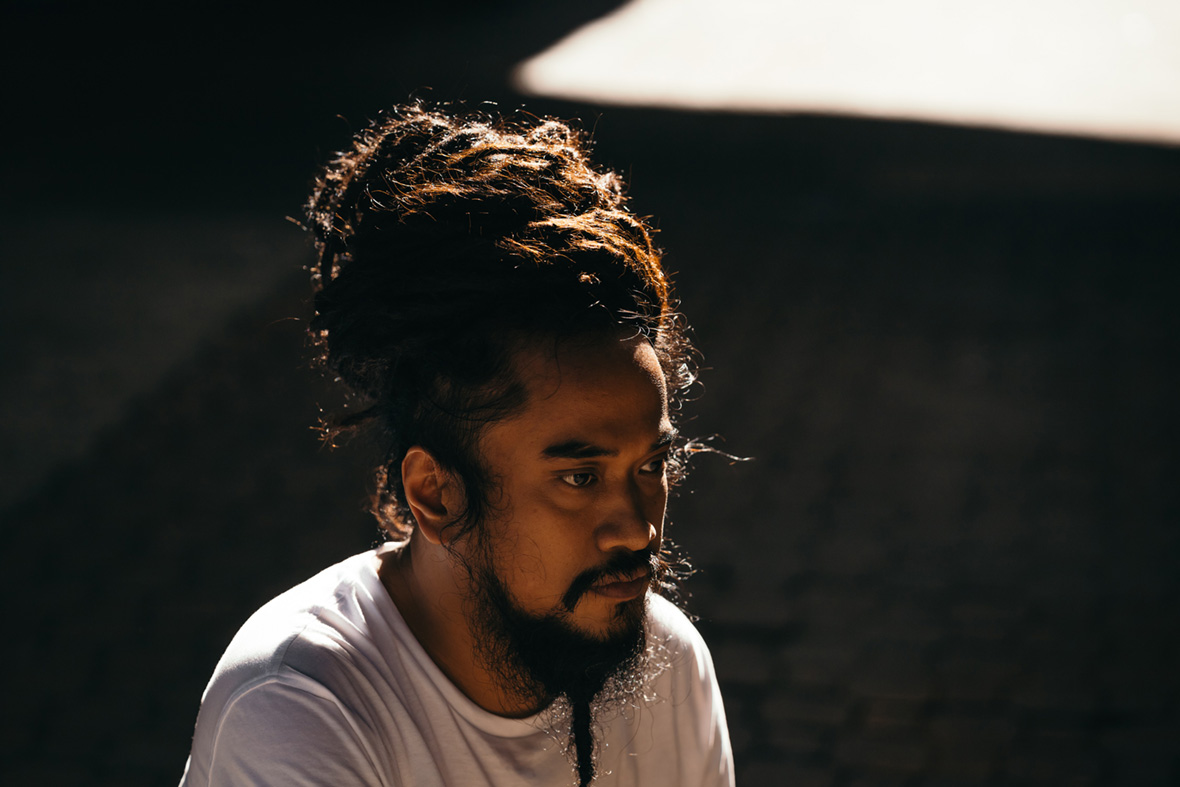
The history of sound system reggae in the Philippines is closely tied to Red-I, a Marikina-raised DJ and producer promoting the Jamaican vibrations as a mission. He may not have brought the culture to the island nation, but he’s certainly been involved with its growth at nearly every step of the way. And with the release of Word Sound Power In Dub, he’s produced the country’s first dub reggae LP pressed to vinyl.
Listen to select tracks below:
行走在菲律宾雷鬼音乐的声场中,Red-I 是一个你绝对绕不开的名字。他是菲律宾马里基纳土生土长的唱片骑师(DJ)和制作人,并一直致力于推广当地的牙买加音乐文化。虽然他并不是菲律宾牙买加音乐第一人,但他的足迹遍布当地雷鬼乐发展的每一个烙印上。他最新发行的专辑《Word Sound Power In Dub》,则被认为是菲律宾第一张回响雷鬼(dub reggae)唱片。
注:雷鬼乐(Reggae),是西印度群岛的一种舞曲,被认为是牙买加的多种舞曲的总称。
点击即可试听:
Reggae has been present in the Philippines since the 70s, when the culture first began making its way around the world from Jamaica, but it’s always been a live-band affair in the Southeast Asian island country. The concept of a DJ playing reggae music over a sound system or artists producing it in the studio has remained stubbornly foreign. It took a while for Red-I, whose given name is Red Lintag, to circle around to it as well. He got his musical start in the late 90s in a rock-rap band. But once he discovered raves, his idea of what music could be changed forever. “There were some great warehouse parties back then, it was pretty wicked,” he recalls. “We’d go to a party and collect flyers on the floor to find the next party and follow the map to get there.”
雷鬼音乐从上世纪七十年代起开始从牙买加传播至世界各地,其中便包括菲律宾。地处东南亚岛国,雷鬼音乐在菲律宾仅作为一种现场的表演形式公示于众。人们似乎难以料想以 DJ、音响系统、电脑制作等形式表演的雷鬼乐是怎样一番景象。对于 Red-I(原名 Red Lintag)来说,他也摸索了相当长一段时间才有了这种想法。Red-I 在 90 年代末曾是一名摇滚乐手,直到接触了锐舞(Rave)音乐,他对音乐的想法彻底发生了转变。他回忆道:“当时有一些很棒的地下仓库派对,非常有意思。去参加派对的人会收集散落在地板上的活动传单,看看下一次派对在哪里,然后跟着地图找到下一场目的地。”
注:锐舞,又称锐舞派对和狂野派对,是八十年代末在美国和欧洲由 Acid House 舞曲兴起的一种派对形式,早期通常在地下俱乐部、废弃仓库和荒郊野外举办。
Raves had a moment in Manila from the mid- to late-90s, with The Consortium parties in particular, which brought famous house and techno DJs from the West, such as Derrick May and Richie Hawtin. But sometimes promoters also booked jungle artists, a style of music started largely by the children of Caribbean immigrants in the U.K., blending chopped-up percussion breaks and electronic sounds with reggae samples and basslines. “I would just stand beside the subwoofer, that’s when I first felt a real sound system,” Red says. “I remember being at a Goldie event and being blown away by the power of the bass. People were going crazy because they didn’t know what to do, how to act.”
九十年代中期到后期,锐舞派对在马尼拉盛行一时,其中 The Consortium 曾是最著名的派对活动,他们经常会邀请来自欧美著名的 House 和 Techno 音乐人,譬如 Derrick May 和 Richie Hawtin。有时主办方也会拉来 Jungle 舞曲艺人(Jungle 起源于英国加勒比移民后代,将切分、零散的打击乐与电音,与雷鬼样本和贝斯相混合)。Red 说:“我站在低音喇叭旁边,那是我第一次亲身见识到真正的声响系统。我记得在英国电子音乐人 Goldie 的演出上,现场低音的声场深深地震撼了我。所有人都疯狂地手舞足蹈起来,甚至不知道该以怎样的舞步来应对这种音乐。”
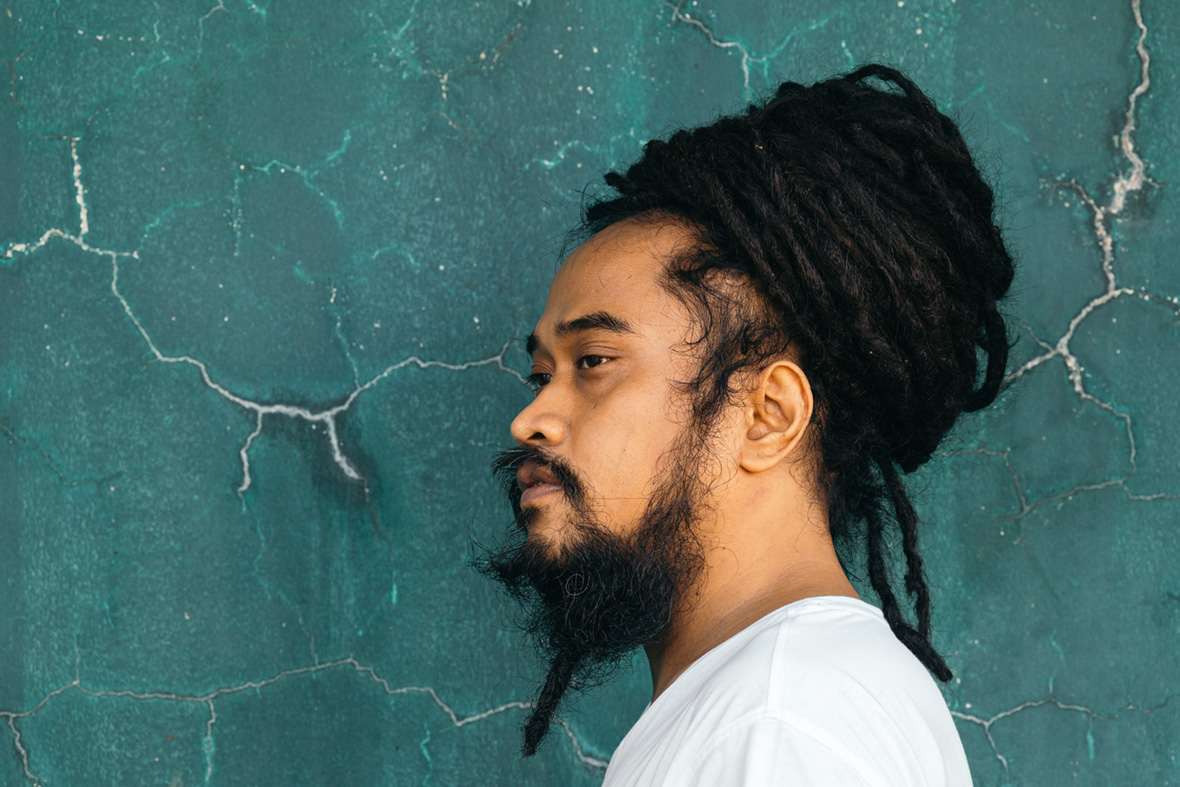
In the early 2000s, when Red was about 20 years old, he started to make beats with his Playstation, using MTV Music Generator. “It was just for fun but it’s how I first learned to put music together,” he laughs. Despite that early exploration of music production, it was live DJing that provided the biggest lessons for him. “At the time, second-hand vinyl was really cheap because people were just throwing them out. CDs were still new here.” As his interest in music grew, he began practicing turntablism, scratching and juggling records, while also exploring other genres. He also began collecting used music magazines like Urb and Wire at steep discounts by visiting local book fairs. “I became really eclectic, that was my style,” he says. “I loved hip hop, U.K. stuff like dubstep and grime. Filipino disco and funk. I’d play it all. It wasn’t until I got older when I pieced together that a lot of this had roots in reggae.”
千禧年初,二十岁的 Red 开始用 PlayStation 和 MTV Music Generator 上的音乐制作软件进行创作。“一开始只是为了好玩,但那其实是我第一次学习制作音乐。”他笑着说道。尽管很早便开始摸索音乐制作,但现场 DJ 却对他启发最大。“那时候,二手黑胶唱片真的很便宜,因为当时 CD 突然出现,黑胶唱片开始逐渐没落。”随着对音乐的兴趣越来越大,他开始钻研 Scratch、Juggle 等唱盘主义艺术 (Turntablism),并尝试接触更多音乐流派。另外,他还会去当地的书展,低价收集《Urb》、《Wire》等二手音乐类杂志。他说:“我喜欢将不同音乐风格揉捻在一起,不拘一格是我的风格。从 Hip-Hop、Dubstep (回响贝斯)和 Grime(英国车库饶舌),到菲律宾迪斯科和 Funk (放克音乐),我全都喜欢。直到后来,我才发现,这里面很多音乐都源于雷鬼。”
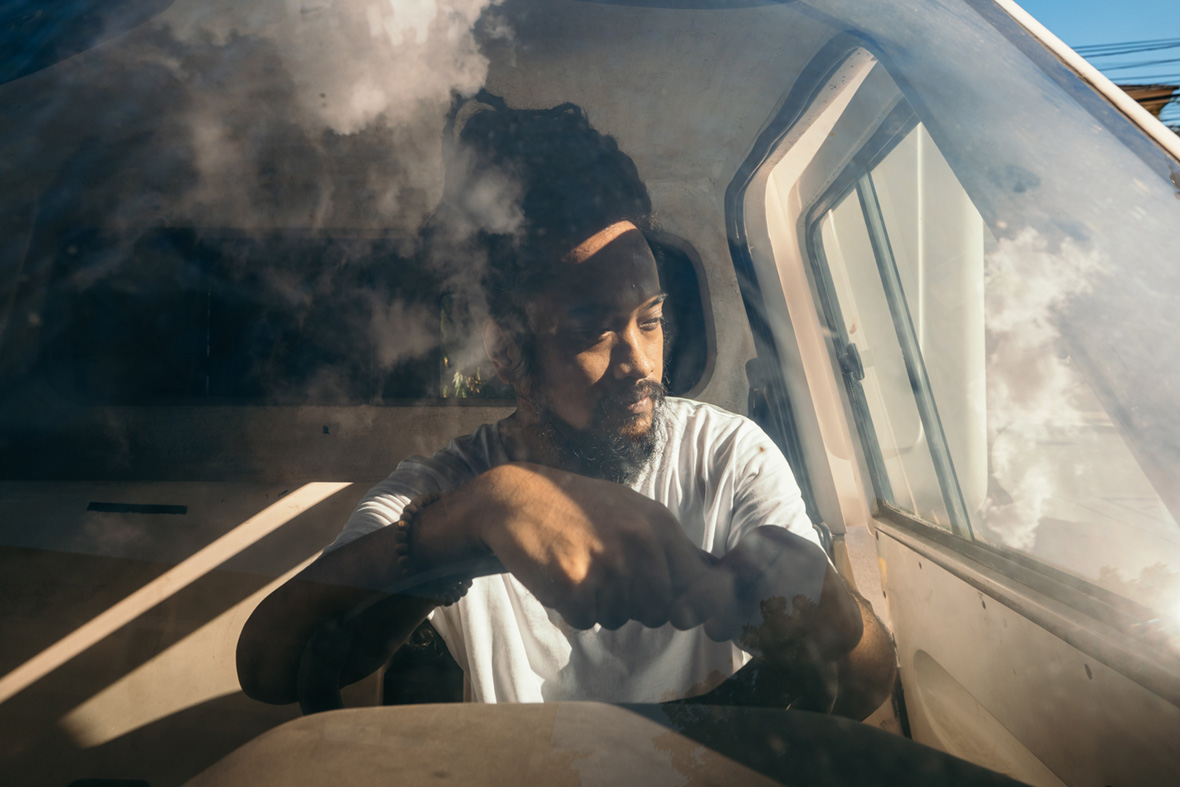
By the mid-2000s, Red was DJing at bars around Manila, playing a range of styles but none of his own music besides the occasional remix or edit. “They were great nights out but it became a problem when I tried to play the heavier stuff,” he says, referring to more aggressive styles with bigger bass. “We could play it once in a while but the manager would always pop up and ask us to play something else.” In order to spin more bass-heavy music, he started the Dubplate parties alongside PJ Martinez, featuring reggae, dubstep, stuff from the L.A. beat scene, and more. “Then one night we got lost while driving the wrong way down a one-way street and passed this truck for sale,” he recalls. “We had extra cash from playing a corporate gig so we bought it and turned it into the Red-I Mobile Sound System.” They began throwing parties, DJing out of the back of the truck and setting up speakers beside it. The bass was so loud once that the vibrations once broke plates inside a nearby restaurant. But there was a lot more space in Manila at the time, so they could just set up in a random parking lot and play (after asking permission, of course).
2005 年左右,Red 在一些马尼拉酒吧里担任 DJ,播放各式各样的音乐。他很少播放自己的音乐,通常是对别人的音乐进行混音或再编辑。他说:“当时氛围是不错的,但当我尝试播放一些低音较快较重的音乐时,反响好像不是特别好。”他接着说道:“偶尔也会试着放一下,但酒吧经理会马上出现,要求我们换成别的音乐。”为了播放这些有着浓重的贝斯节拍的音乐, 他开始和 PJ Martinez 合作举办一场名为 Dubplate 的派对, 专门播放雷鬼、Dubstep 和其他洛杉矶 Beats 场景音乐等。他回忆道:“某天晚上,我们开车走错到一条单行道,偶遇到有辆卡车在出售。我们那时候刚参加完一场公司演出,有一些现金,于是当机立断买下了那辆卡车,打算将把它改造成一台移动声音系统。” 卡车后车厢成了他们的派对场地,摆放着音箱和设备。强烈的贝斯甚至将附近餐厅里的盘子震碎过。当时马尼拉有很多地方,所以他们可以随机找一个停车场进行派对(当然,事先会取得许可)。
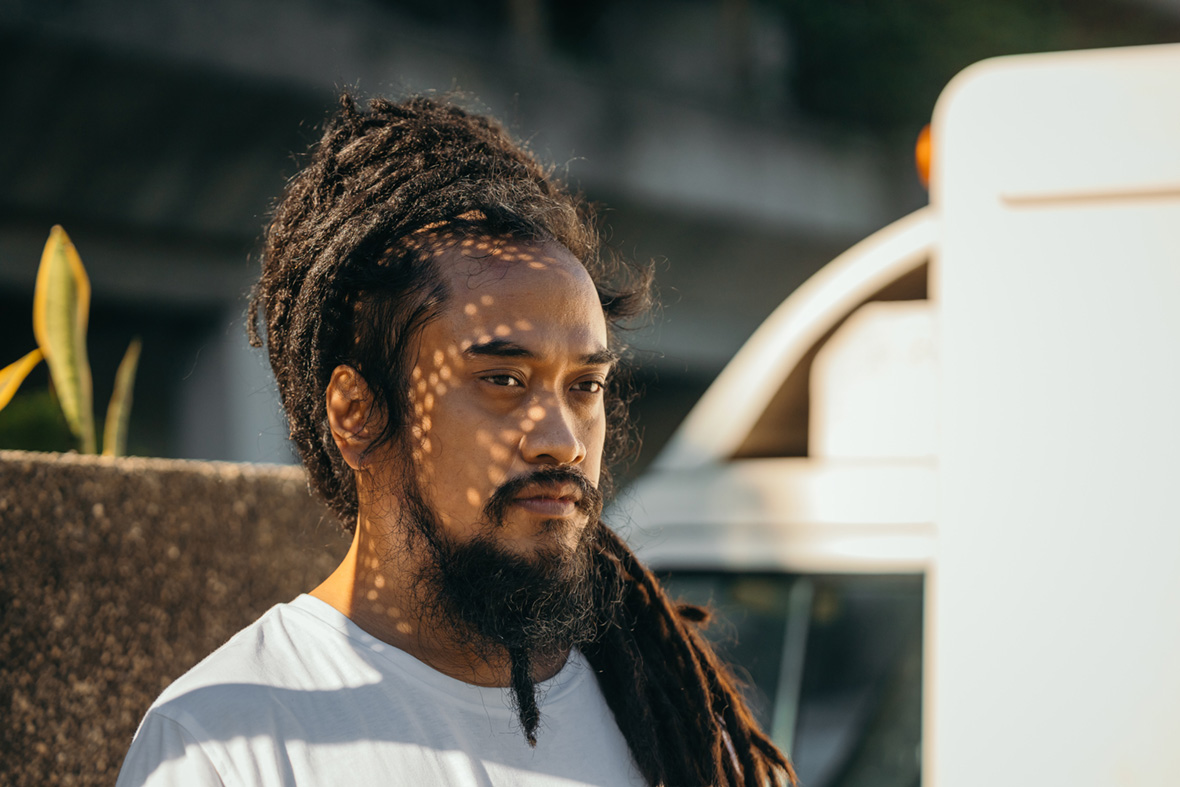
“It was hard work; I was DJing seven days a week,” Red says. But it paid off. For the one-year anniversary of Dubplate, they flew Gaslamp Killer out from Los Angeles and rented a warehouse. “It was so mad, I knew it was the next big thing.” It caught the eye of Eric Ong, who had a history of running clubs and used to DJ with Red. “After a few months, he came to us with this raw warehouse space. They regularly started booking big acts from L.A. and the U.K. like Samiam, Kode 9, and Addison Groove. The space would eventually become B-Side, home to a revolving cast of events and central to the music scene in Manila before its closing in 2018 due to gentrification.
Red 说:“那时候其实挺累的,因为我每周七天都在 DJ。”但这是值得的,Dubplate 活动一周年的时候,他们邀请了洛杉矶大名鼎鼎的 Beats Maker —— Gaslamp Killer,并为此租下一座仓库。“当时现场太疯了,引起了不小的轰动。”这次活动引起了 Eric Ong 的注意,他曾也营过俱乐部,经常和 Red 一起 DJ 过。“几个月后,他带我们找到了这个原始的仓库。”他们开始定期邀请洛杉矶和英国的著名音乐人,如 Samiam、Kode 9 和 Addison Groove。这个空间取名为 B-Side,后来成为一个举办各种活动的场地,是马尼拉地下音乐的聚集地,直到 2018 年因为旧城区的城市化改造而关闭。
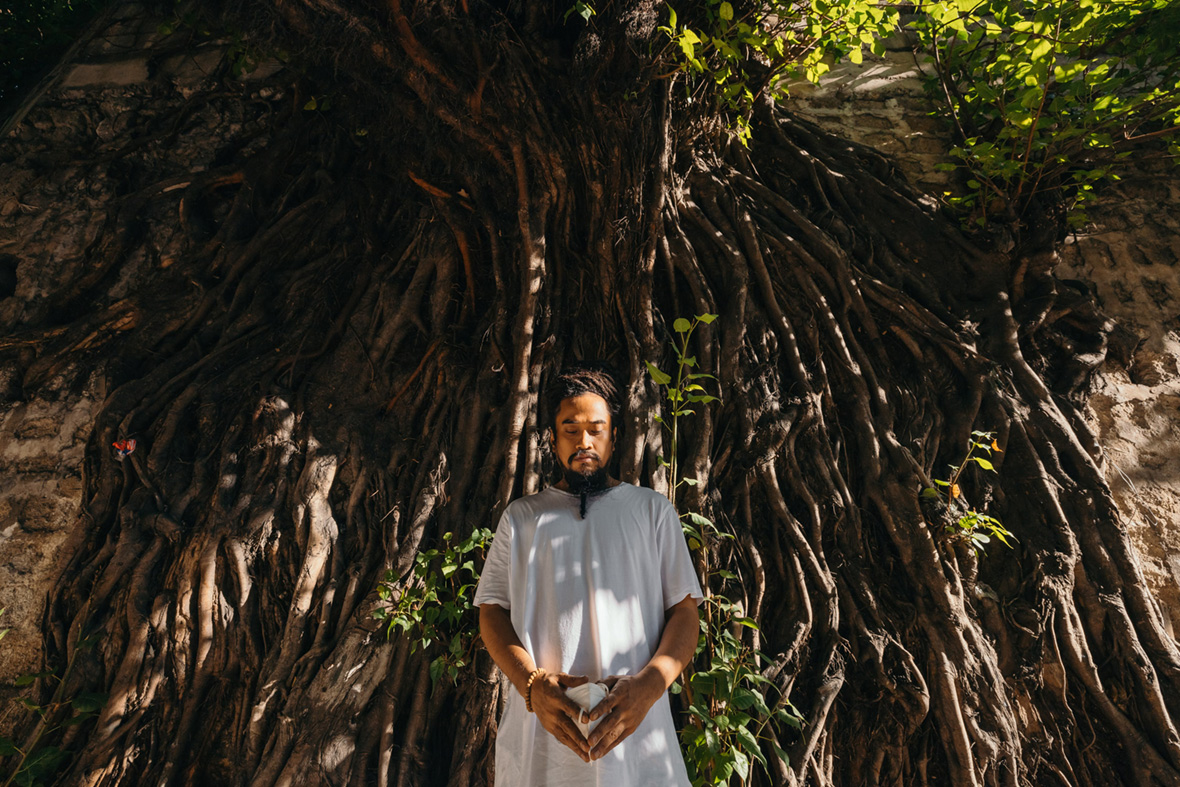
B-Side became the beginning of a mini-empire. They launched several clubs and bars, featuring some of the most progressive bookings in the capital. “B-Side became a live music space, it was just fitting for the open floor plan. It was good for the scene so we kept supporting it, but we wanted something else.” Eventually, the Dubplate parties became more and more electronic focused, so they pulled back and tried to recreate the earlier, more laid-back vibes by launching the Irie Sunday parties, which focused specifically on reggae. Later, at another one of their venues called Black Market, they hosted Dancehall Manila, creating space for yet another reggae subgenre.
Throughout all this, Red never stopped producing his own music. He was dropping hour-long beat tapes, instrumental hip-hop projects released on labels like Shanghai’s Svbkvlt and Australia’s Dub Temple. Each tape was built around specific sonic themes, such as Vietnamese or ethnic Filipino samples.
B-Side 标志着一个迷你音乐帝国的开始,其相继推出多家俱乐部,向当地发射最为前卫的音乐现场。“B-Side 后来成为一个做 Live 的开放式空间。利于当地音乐场景的发展,所以我们会继续做下去,但同时我们又想要一些不同的东西。”后来,Dubplate 派对越来越专注于电子音乐,但他们又试图倒退回去,创办了专注于雷鬼音乐的 Irie Sunday 派对,希望能重现雷鬼文化早期那种悠哉的状态。后来,他们在另一个场所 Black Market 举办了 Dancehall Manila,专注于 Reggeaton 和 Dancehall 舞曲(两者同样是由雷鬼衍生的音乐形式)。
自始至终,Red 从未停止制作自己的音乐。他分别在上海先锋电子音乐厂牌 SVBKVLT 和澳大利亚舞曲厂牌 Dub Temple 上发行了长达一小时的音乐磁带和器乐嘻哈音乐项目。每张作品都围绕特定的音乐主题,如越南或菲律宾特色音乐的采样。
With this year’s Word Sound Power In Dub, Red is focusing purely on dub; taking his reggae production and injecting it with even deeper bass, cutting out much of the vocal tracks, and replacing it with healthy helpings of reverb and delay. There’s also a roots version—the original, classic style of reggae—with a collection of vocalists from Jamaica to Cebu, many of whom he met through bookings at B-Side. “Reggae is about truth and life, consciousness,” he says. “I want to focus on more of these positive vibrations. I guess I’m getting old, but it makes sense to me.”
Since quarantine, Red hasn’t been doing much beyond making music and building his first DIY sound system, which holds 10 cabinets, including four subwoofers. He’s building the wooden casing by hand, and sourcing all the speakers and electronics himself, which he then tunes to his preference, specifically geared towards the frequencies of reggae. “It’s always been a goal of mine, so now I’m doing it,” he grins. I’m excited to introduce that. You can tell people about a sound system but you really need to hear it.”
Red 在今年发布的《Word Sound Power In Dub》是一张纯粹的 Dub 风格专辑。整张专辑在雷鬼音乐中加入更为深厚的贝斯,去掉大部分人声,反而将注意力放在混响(reverb)和延迟(delay)上。同时还融入了根源雷鬼(Roots Reggae,经典的雷鬼风格) ,囊括了一众来自牙买加和菲律宾宿务岛的歌手,其中许多人都是他在 B-Side 演出活动上认识的。他说:“雷鬼在于真理、生命和意识。我想专注于更多积极的音乐。可能因为年纪大了吧,但我觉得这样的音乐才是有意义的。”
今年疫情爆发以来,Red 大多时间都在创作音乐和搭建他的第一个 DIY 声音系统,这个声音系统由10 个音箱组成,包括 4 个低音喇叭。他还在手工建造一个木制外壳,亲自采购所有的音箱和电子设备,然后根据自己的喜好和雷鬼音乐的中、高、低频进行调整。他笑着说:“这是我一直想做的事情,现在终于实现了。我很期待将它公诸于世。但关于声音系统,说再多也没用,要现场听了才知道。”
Like our stories? Follow us on Facebook and Instagram.
Bandcamp: red-i.bandcamp.com
Soundcloud: ~/red-i
Contributor: Mike Steyels
Photographer: Jilson Tiu
Chinese Translation: Olivia Li

